The Perils of Chronic Under-Loading
From the Editor
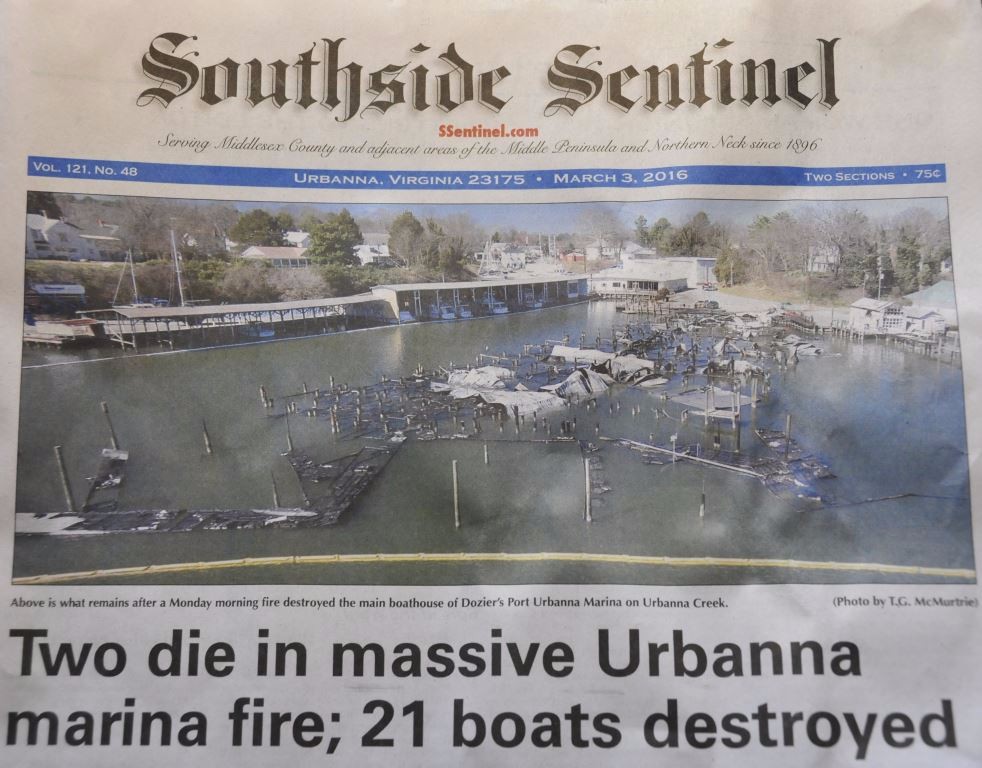
Every time a tragedy of this sort befalls boat owners and the marine industry, I feel compelled to write about it in the hopes of preventing a reoccurrence, however, this case is special as it has taken place in my own community. Urbanna, Virginia, population 500, located on the Rappahannock River, a tributary of the Chesapeake Bay, is home to the famed annual Urbanna Oyster Festival. The early hours of March 29, however, were anything but festive as a fire tore through the town’s Dozier Yachting Center (formerly Southside Marine), taking with it the lives of one couple who were aboard their boat, along with twenty one vessels, all of which were total losses. The cause of the fire remains undetermined. The Virginia State Police have indicated there is an ongoing criminal investigation. Some have interpreted that to mean an arson investigation, while others have speculated that this is normal procedure in the event of a fire in which fatalities are involved.
According to a recent Boat Owners Association of The United States analysis, boat fire insurance claims fall into the following statistical categories…
26% of fires are due to “Off-the-boat” sources
20% of fires are due to “Engine Electrical”
15% of fires are due to “Other DC Electrical”
12% of fires are due to “AC Electrical”
9% of fires are due to “Other Engine”
8% of fires are due to “Batteries”
Assuming this conflagration was accidental, and I certainly hope that is the case, as arson would be a black mark against this otherwise idyllic waterfront community, there are, even at this early stage, lessons to be learned. If your vessel is not equipped with smoke detectors, that wrong should be righted immediately. Common household smoke detectors that carry a UL 217 (RV) rating are appropriate for use aboard your vessel. My preference is for either the photo electric sensing variety, or combination photo electric/ionization units. Models that rely solely on ionization should be avoided as they are more effective at identifying flaming rather than smoldering fires; the latter are far more common aboard boats. For more on smoke alarms and their selection and installation see http://stevedmarineconsulting.com/special-edition-smoke-detectors/
The above statistics make it abundantly clear that your electrical system is the most likely cause of a fire. While that may not come as a surprise, the volume of electrical faults I encounter, aboard both new and pre-owned vessels, during inspections I conduct remains unsettlingly high. My advice to readers is, therefore, make certain your vessel’s electrical system is fully compliant with relevant American Boat and Yacht Council Standards (ABYC), which cover AC and DC systems, batteries, chargers, and inverters. When considering a new vessel, ask the manufacturer if the electrical system is ABYC compliant. If you are having electrical work carried out aboard a vessel you already own, make sure those who complete it agree to do so in accordance with these standards (they must be ABYC members in order to have access to the Standards).
This month’s column is on the subject of chronic engine under loading, I hope you find it both useful and interesting.
The Perils of Chronic Under-Loading
Text and photos by Steve D’Antonio
Copyright © 2016
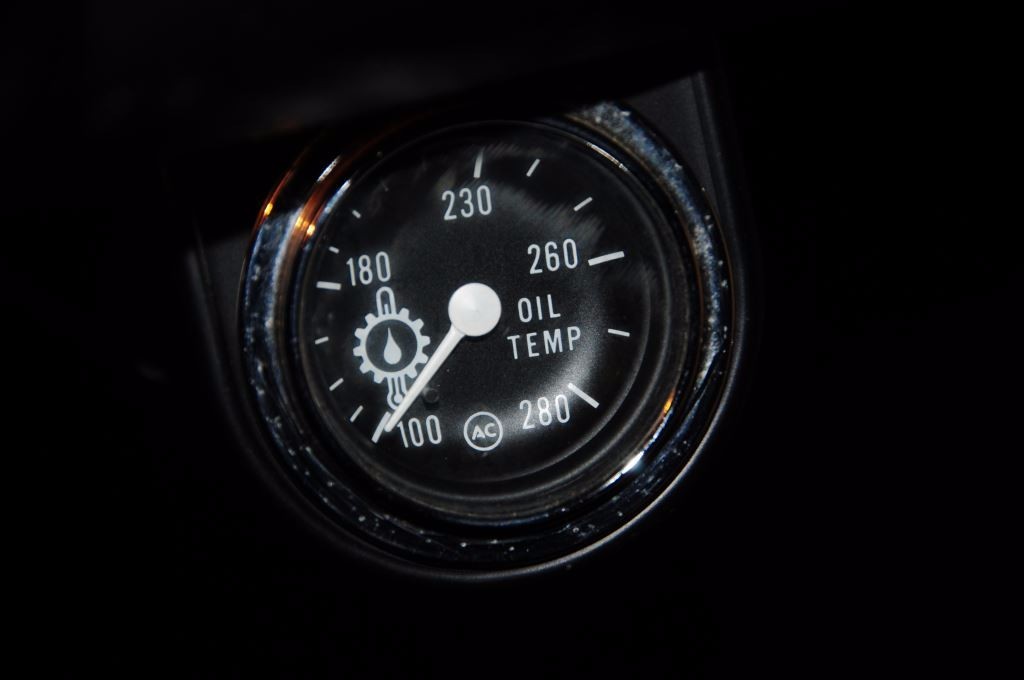
An often misunderstood side effect of under loading is “cool” oil, crankcase oil that runs at a temperature that allows for the formation of contaminants.
Not long ago I read a boat review in which the reviewer boasted that, because the subject vessel achieved cruising speed while using only a fraction of the engine’s available power, the engine should therefore last “forever”. It’s a concept that’s commonly misunderstood, and is seemingly counter-intuitive, the lighter the load on your engine the greater the likelihood of developing problems. It’s true, when a diesel engine is chronically under-loaded several phenomena occur that conspire to shorten the life of the engine and/or increase the need for maintenance and possible repairs.
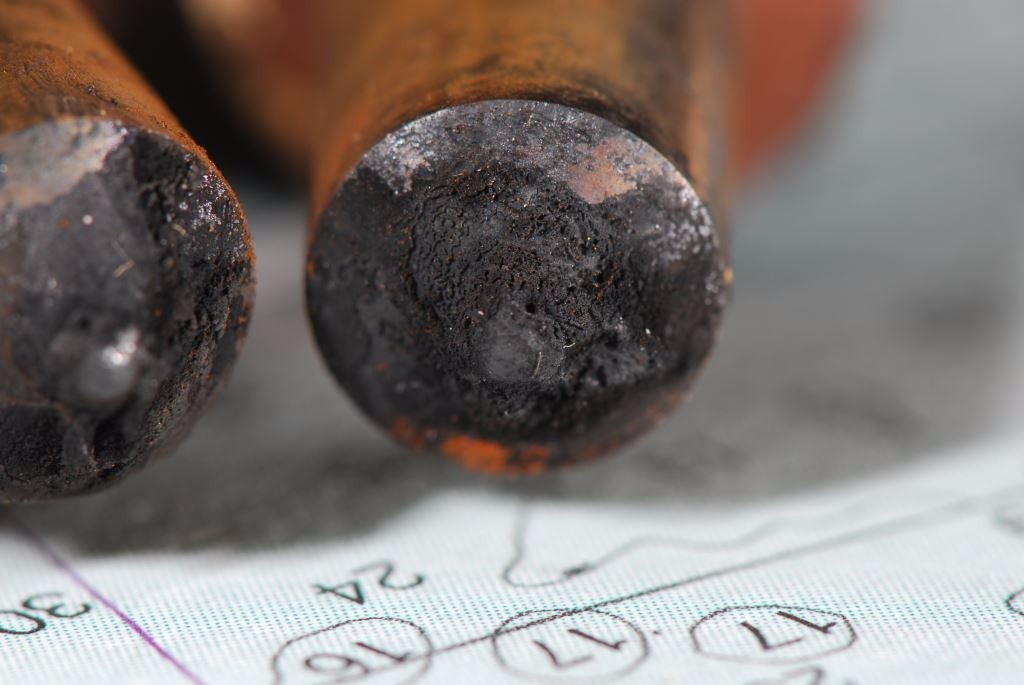
Injector nozzles often develop carbon accumulation when chronically under loaded, upsetting fuel atomization, which in turn leads to smoke production, hard starting and rough idle.
The environment inside a diesel engine combustion chamber is a hellish one indeed. The temperature can reach over 1000°F while the pressure may be twenty times that of the atmosphere outside the engine. Interestingly, however, this is how a diesel engine is designed to operate, at comparatively high temperature under relatively high load. The high pressure found within the combustion chamber represents the very philosophy of the diesel ignition process, compressing the air increases its temperature, which in turn enables it to ignite the subsequently injected fuel. While I’ll be the first to recognize that it’s not always possible for recreational vessels to be operated in this manner, Ideally, a diesel engine should be run at approximately 75% of its output capacity as often as possible. When operated in this manner the temperature within the engine, specifically the combustion chambers and oil, ensures efficiency and longevity. Contrary to popular belief, and the claims of many sales people, while they may have improved defenses against it, new, electronically-controlled engines are not immune from issues created by chronic under-loading.
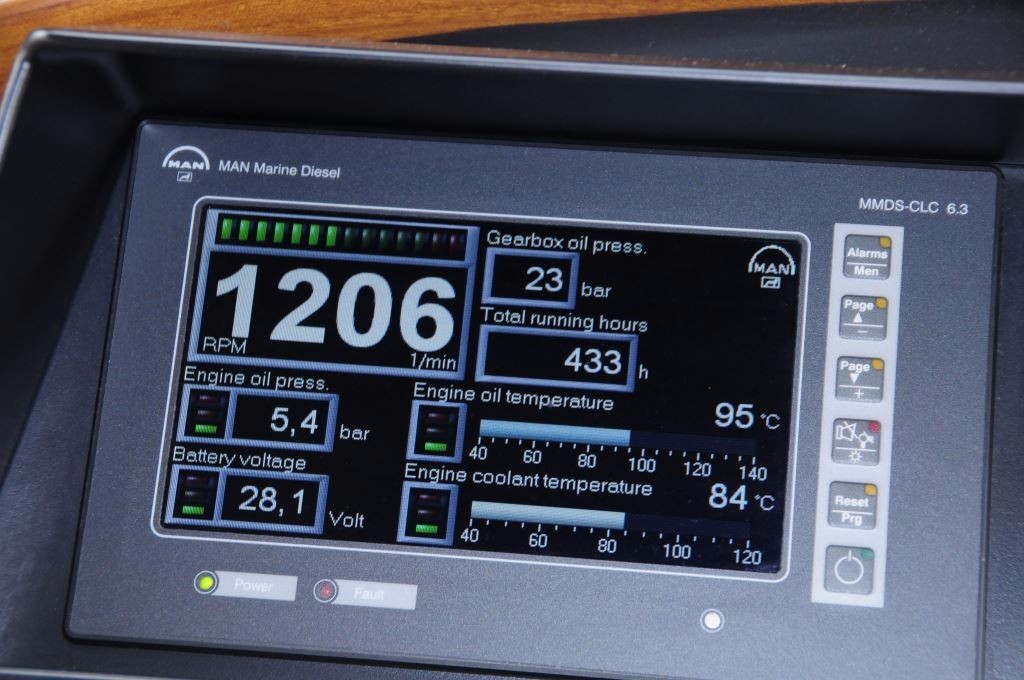
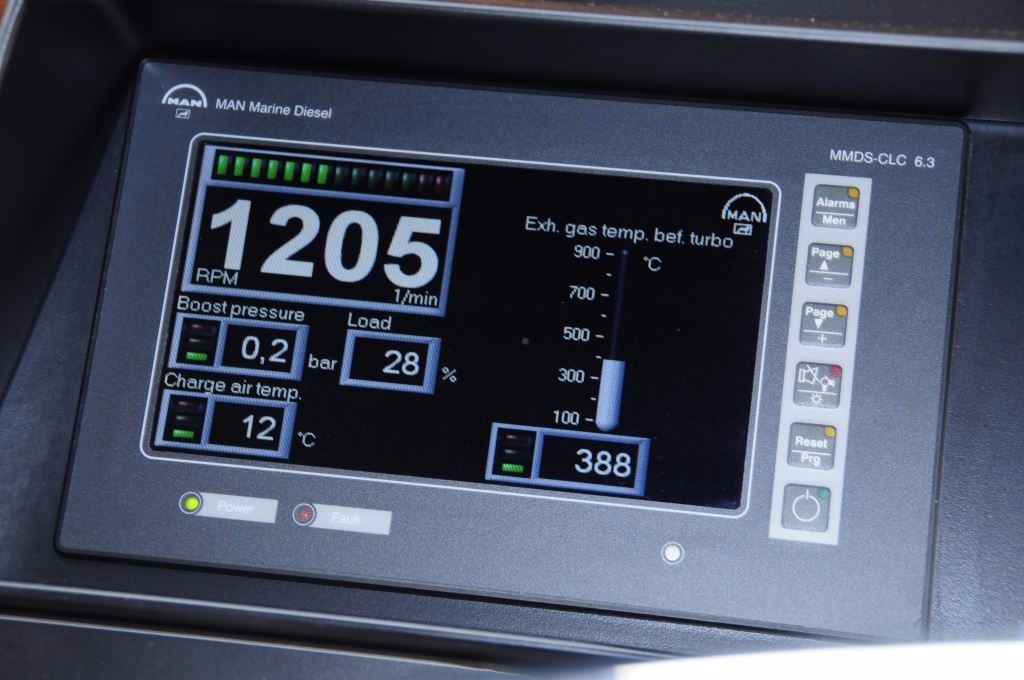
Oil and exhaust temperature tell the real story where the under loading phenomenon is concerned. Few engine instruments show oil and exhaust gas temperature, this one is an exception, showing 95°C, or 203°F for oil, and 400°C or 750°F for exhaust, both of which are ideal.
When discussing proper operating temperature it’s important to remember that there are several regions within the engine, all of which may be operating at different temperatures under differing load conditions. For instance, when you start your engine and run it at idle or at low rpm you may notice that the temperature gauge, it’s measuring coolant temperature, doesn’t move very much.
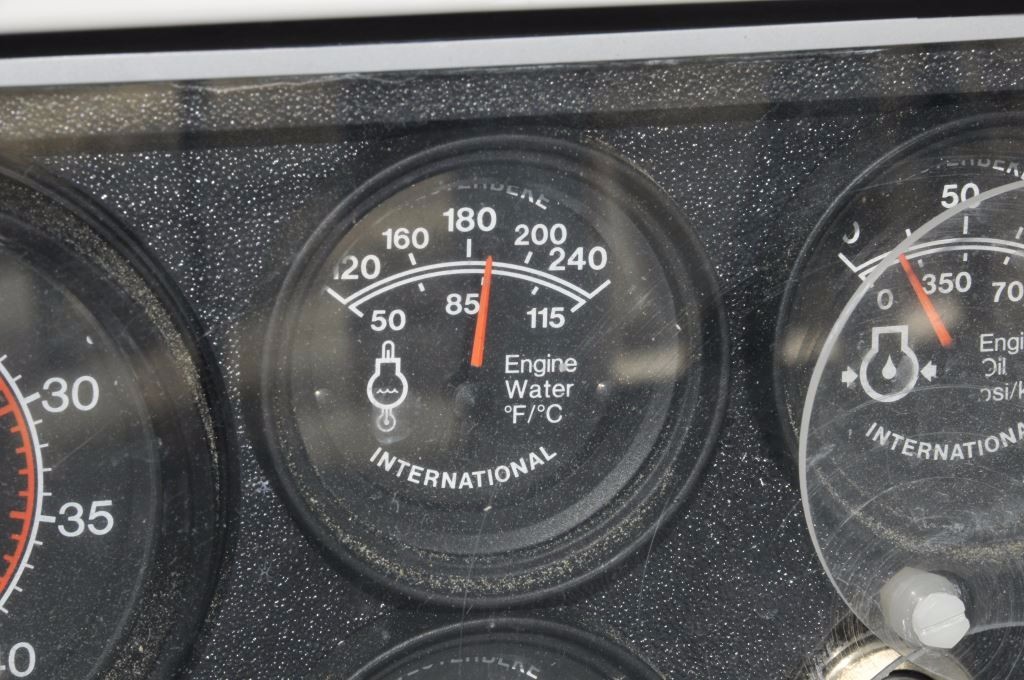
Coolant is thermostatically controlled and will typically reach its ideal temperature shortly after an engine is loaded.
If it’s graduated in numbers as it should be it’s unlikely that the needle passes 140°F. When underway, with an appreciable load applied, then the needle should hover around the engine’s maximum design operating temperature, this is controlled by its thermostats (some engines shave two), which for closed cooling system engines is typically between 160°F and 195°F. In a light load condition, regardless of coolant temperature, combustion chamber temperature may be comparatively low, lower than that which is optimal (the minimum ideal exhaust gas temperature is 450-500°F); this leads to the formation of excess soot or carbon, which is deposited on the piston rings, injectors and valves, a scenario which reduces efficiency and may shorten the life of these components (light loading also leads to “wet stacking”, the accumulation of unburned fuel and soot inside turbo chargers and exhaust systems).
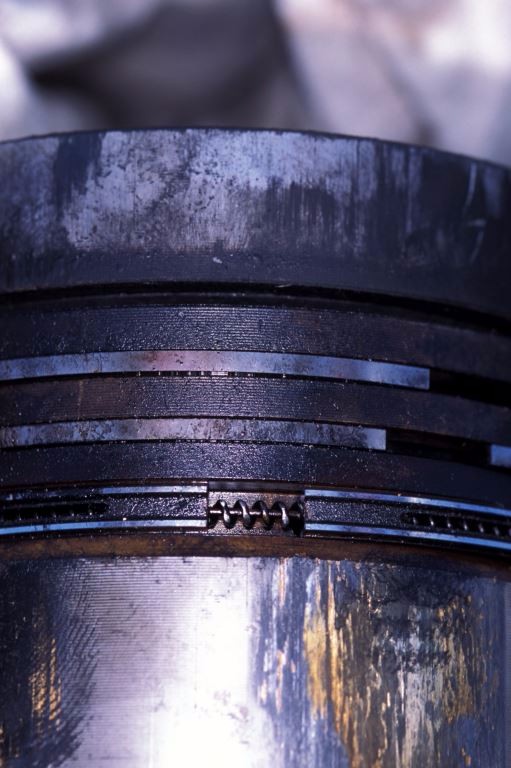
Under loading can lead to piston ring soot clogging, which in turn exacerbates blow-by and oil contamination.
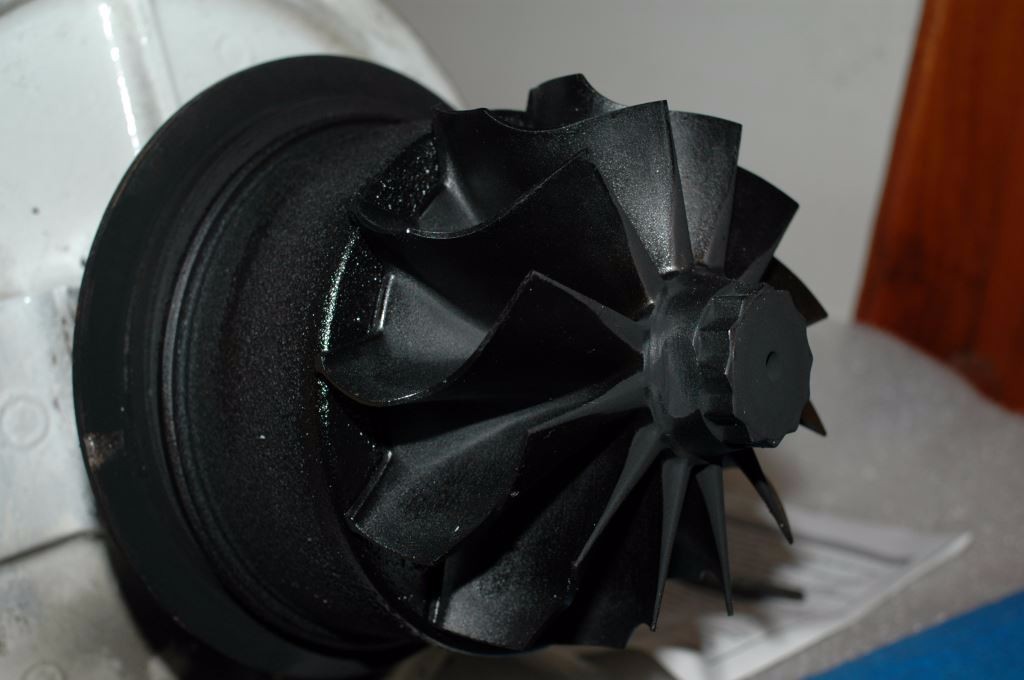
Yet another undesirable side effect to under loading, “wet stacking” a process where un-burned fuel and soot accumulate in turbo chargers and exhaust systems, thereby impairing their efficiency.
Cylinder wall glazing, a process by which the necessary oil-retaining grooves or “cross hatch” in a cylinder wall is warn away, which exacerbates blow-by or leakage of gasses and un-burned fuel past piston rings and into the crankcase, also occurs when an engine is chronically under loaded, especially early on in its life. Because they are often chronically under loaded in the critical break in period, the first 50-100 hours, generators are notorious for suffering from this malady.
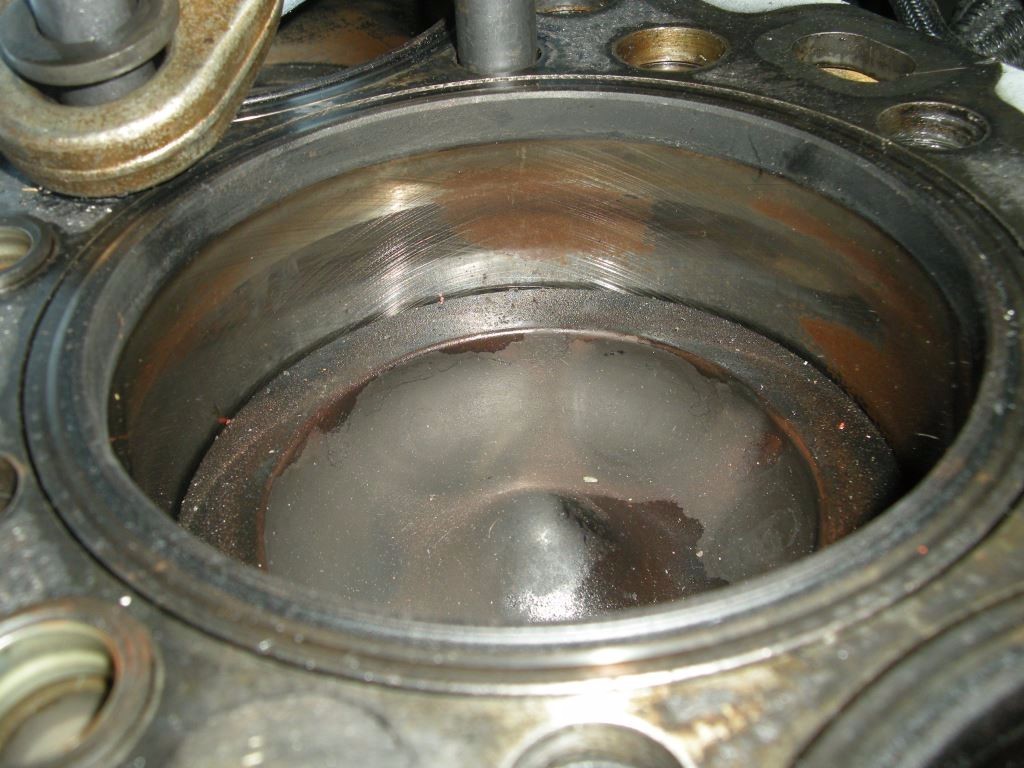
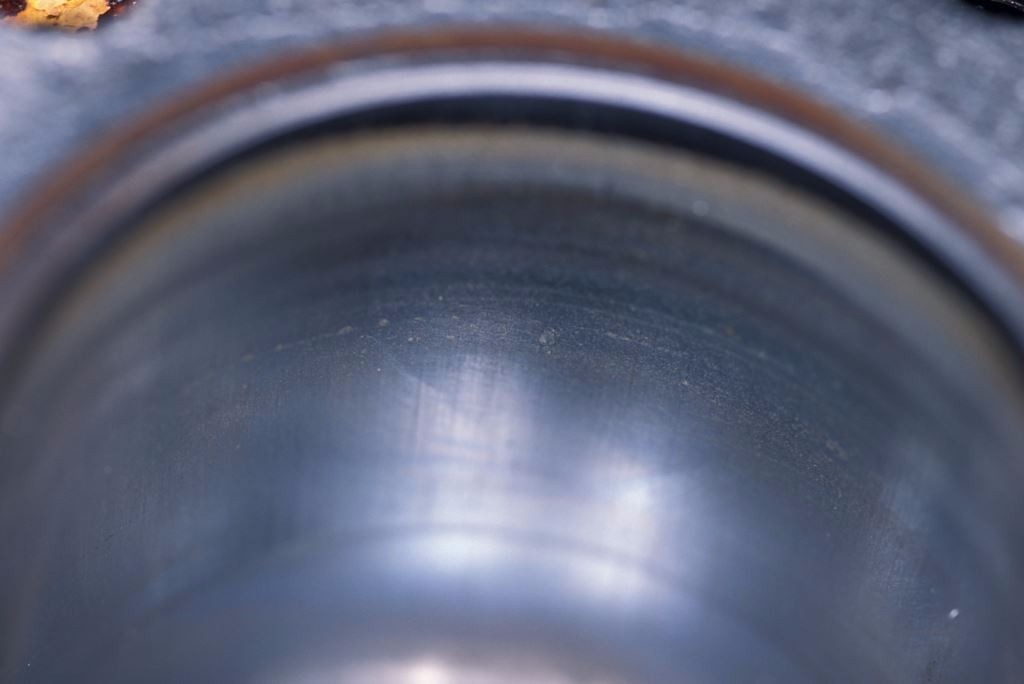
The cross hatch, essential oil-retaining grooves cut into cylinder walls, has been completely worn off the walls of this generator’s cylinder walls (above), the result of chronic low load operation. Compare this with “healthy” cross hatch pattern (top).
While coolant temperature is important, the crux of the problem lies in the engine’s oil. Even under moderate load, when the coolant reaches a normal operating temperature, unless the engine is equipped with a thermostatically-controlled oil cooler, the oil temperature often remains cooler, too cool for optimum operation. This is a significant and often overlooked aspect of under-loading. Few engines are equipped with an oil temperature gauge; however, you can measure yours by “shooting” the approximate vertical and horizontal center of the oil pan with an infrared pyrometer.
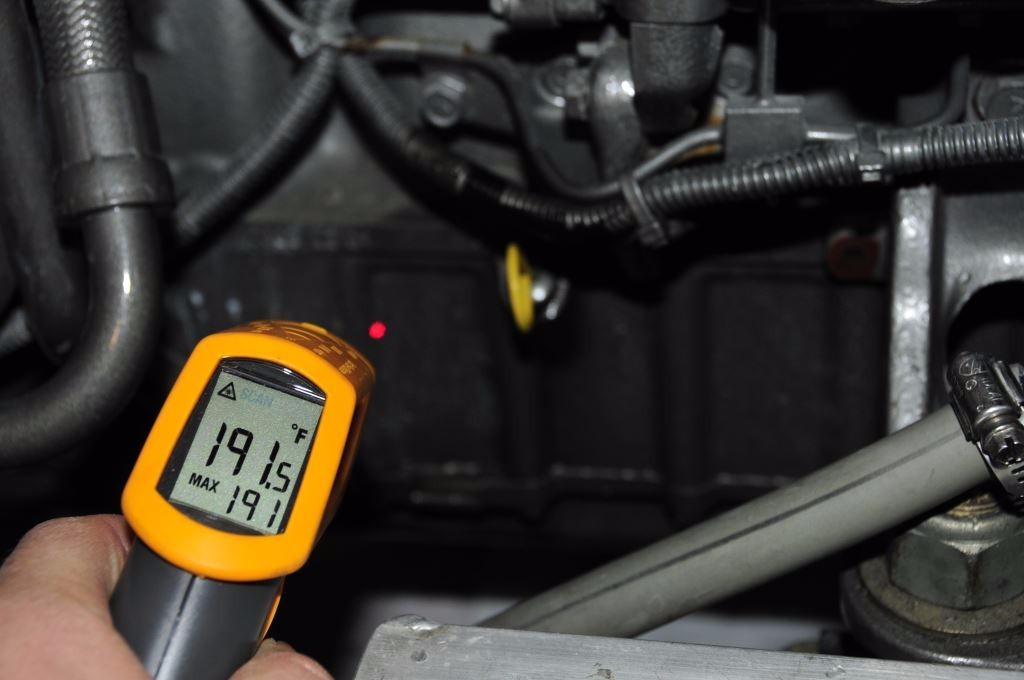
Oil temperature can be measured using an infra-red pyrometer to “shoot” the vertical side of the oil pan.
The consequences of operating an engine with “cold” oil are an increase in sludge and varnish production within the oil, as well as an inability for the oil to vaporize water that accumulates as a result of piston ring blow by, which itself is exacerbated by the aforementioned carbon formation. Blow by is essentially combustion chamber gasses, and fuel, “leaking” past the rings into the crankcase, a small amount of which is normal, carrying with them some water that’s part of all diesel exhaust.
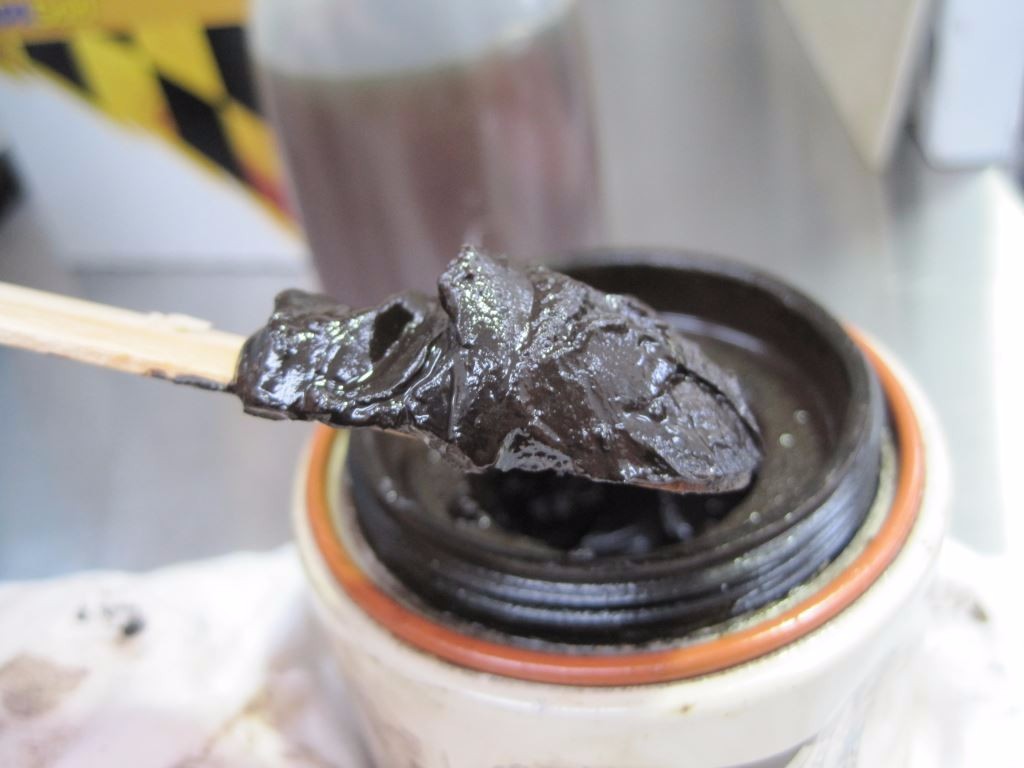
Chronic low load operation often leads to sludge formation, an extreme case is shown here, within crankcases, which can impair lubrication of valve trains, timing chains and other components.
Whether the blow by is normal or excessive, the water can only evaporate when the oil gets hot, over about 160°F. Ideally, oil should operate at somewhere between 180°F and 210°F (while ‘hot’ oil is good, there is a happy medium between harmful byproduct formation and thermal degradation and decreased viscosity). Sludge is a combination of water, carbon and other contaminants, it impedes oil flow and, as the name implies, it’s greasy and often brown or tan in appearance, while varnish is a precipitate that is much harder, like, well, varnish, it adheres tenaciously to metal surfaces within the engine. Both of these contaminants are harmful to an engine as they starve vital components of lubricating oil. Fuel dilution, again the result of blow-by, on the other hand, diminishes oil’s viscosity and its lubricating ability, as well as prematurely consuming portions of its additive package.
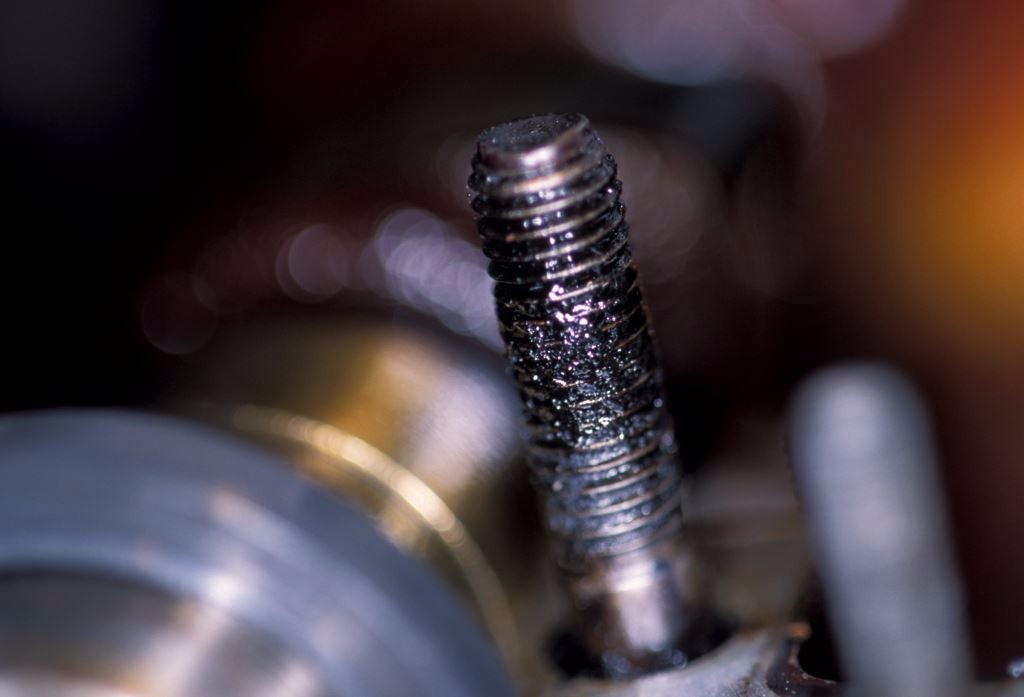
After sludge comes varnish, the latter is far more damaging in that it is hard and plastic-like, similar to varnish, and can easily clog oil galleries and ports.
While it may be wishful thinking, ideally, engines installed aboard displacement vessels should be selected by boat builders to avoid chronic under loading, or over-powering. For planing vessels that are frequently run at displacement speeds, the issue is veritably unavoidable. Ultimately, to the extent it’s possible, avoid chronically under loading your engine (and generator) and, if you must do so, run it up to 75% load for 10-15 minutes out of every four hours to stem the sludge, varnish and carbon tide, and perform oil analysis with each oil change.
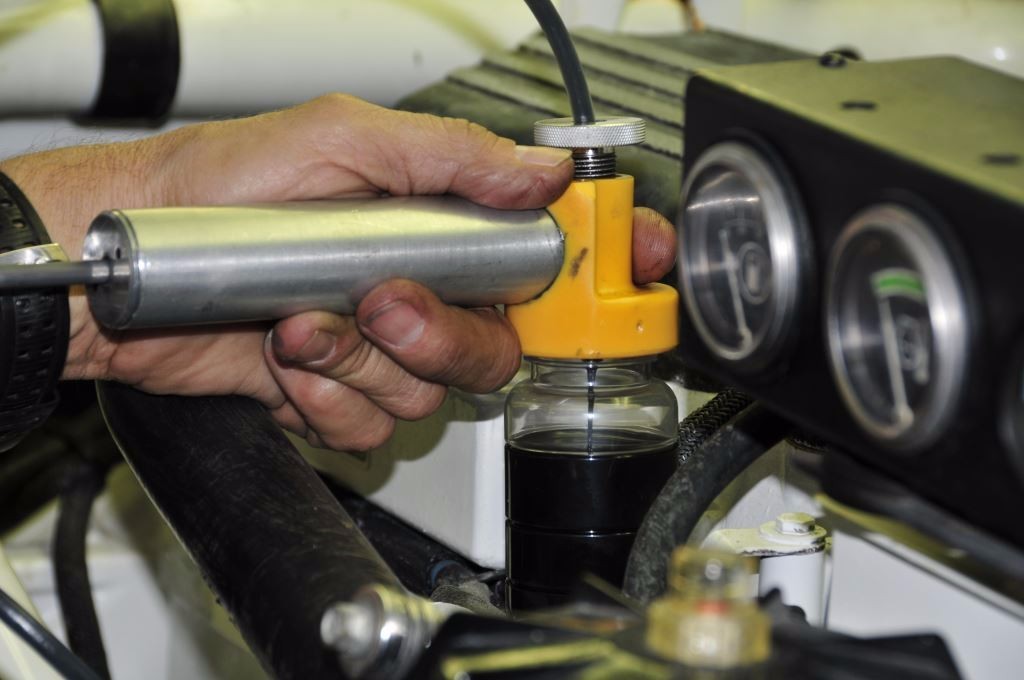
Oil analysis, an already important tool, becomes even more critical in monitoring engine health where chronic under-loading is concerned.
The former will increase oil and combustion chamber temperature to more desirable levels, thereby reducing the build-up of carbon, sludge and varnish, and the latter will alert you to contaminant-related issues caused by under-loading, before they become critical.